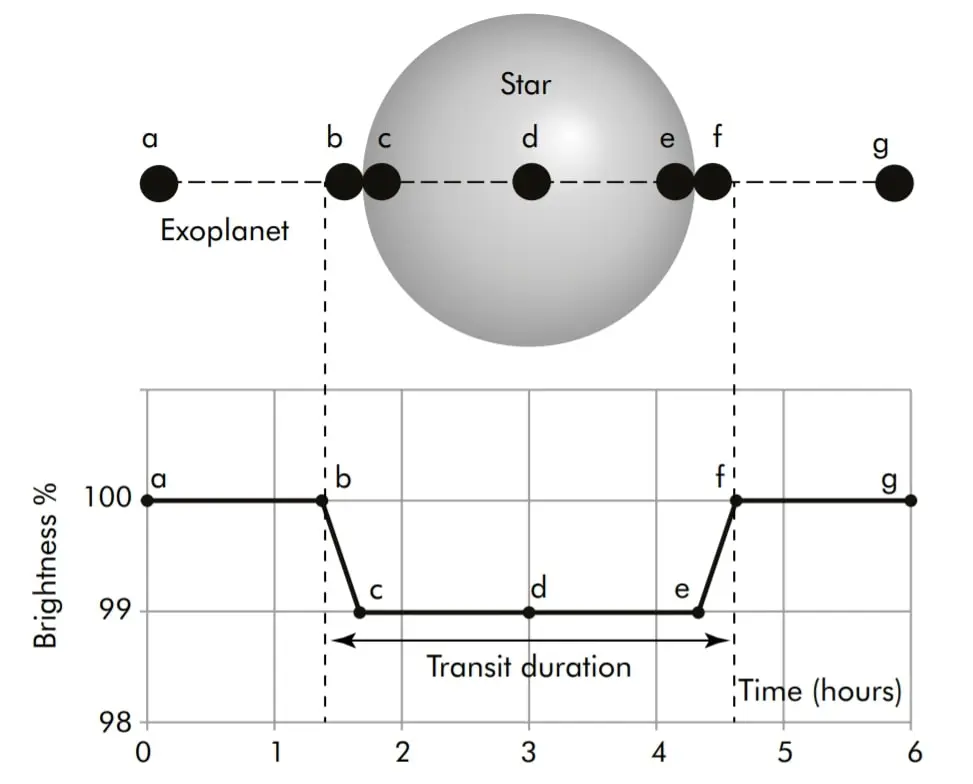As a species, humans have always been fascinated by the possibility of extraterrestrial life. From ancient myths and legends to modern science fiction, the idea of life beyond our planet has captured our imaginations for centuries.
But is there any scientific evidence to support the existence of life beyond Earth? In this article, I will examine the latest scientific research on the search for extraterrestrial life and explore the possibility of other forms of life in our universe.
The Question of Life Beyond Earth
The question of life beyond Earth is one that has fascinated humanity for centuries. Despite our best efforts to search for extraterrestrial life, we have yet to find any concrete evidence of its existence.
Firstly, the vastness of the universe is difficult to comprehend, with billions of galaxies and trillions of stars. In fact, there are more stars in the universe than there are grains of sand on all the beaches on Earth. With such a vast expanse to explore, it seems unlikely that we are alone in the cosmos.
Secondly, the discovery of extremophiles – organisms that can survive in extreme environments – has expanded our understanding of the conditions in which life can thrive.
These creatures have been found in environments such as deep-sea vents, acidic lakes, and even in the vacuum of space. This leads us to wonder what other forms of life might exist in the universe that we have not yet discovered.

Finally, the recent discovery of water on Mars and the moons of Jupiter and Saturn has reignited our search for extraterrestrial life. Water is considered a key ingredient for life as we know it, and the possibility of finding it on other planets increases the chances of finding life beyond Earth.
In summary, the question of life beyond Earth is a fascinating one, and there are many curious facts that make it all the more intriguing. With the vastness of the universe, the discovery of extremophiles, and the recent discovery of water on other planets, it seems that the search for extraterrestrial life is more promising than ever.
The Scientific Search for Extraterrestrial Life
The scientific search for extraterrestrial life is a multi-disciplinary field that brings together experts from astronomy, biology, chemistry, and other related disciplines. One of the most promising approaches to detecting life beyond Earth is the search for biosignatures, which are chemical or physical signs of life.
These could include the presence of certain molecules, the existence of complex organic compounds, or the detection of atmospheric gases that are characteristic of life.
Another approach to the search for extraterrestrial life is the study of extremophiles, which are organisms that can survive in extreme conditions that would be lethal to most other organisms.

By studying how these organisms survive and thrive in such harsh environments, scientists hope to gain insights into how life might exist on other planets or moons that have similar conditions.
The Possibility of Life in Our Own Solar System
In recent years, there has been growing evidence to suggest that life may exist in our own solar system. One of the most promising candidates for extraterrestrial life is the icy moon Europa, which orbits Jupiter.
Scientists believe that Europa may have a subsurface ocean of liquid water, which could potentially harbor life. Other potential candidates for life in our solar system include Saturn’s moon Enceladus and Mars, which may have had liquid water in the past.
Here is an extensive list of solar system bodies where some life form might be possible:
- Mars: Mars is considered the most promising planet for finding evidence of past or present microbial life.
- Europa: Europa is a moon of Jupiter that is thought to have a subsurface ocean of liquid water.
- Enceladus: Enceladus is a moon of Saturn that also has a subsurface ocean of liquid water.
- Titan: Titan is a moon of Saturn that has a thick atmosphere and hydrocarbon lakes on its surface.
- Ceres: Ceres is a dwarf planet located in the asteroid belt between Mars and Jupiter.
- Venus: Although the surface of Venus is extremely inhospitable, with temperatures hot enough to melt lead, scientists have detected phosphine in the atmosphere, which could be a potential sign of microbial life.
- Mars Moons: Phobos and Deimos, the two moons of Mars, are also considered potential candidates for finding evidence of microbial life.
- Pluto: Recent studies have suggested that Pluto may have a subsurface ocean of liquid water.
Exoplanets and the Search for Habitable Worlds
In addition to searching for life in our own solar system, scientists are also exploring the possibility of habitable exoplanets – planets that orbit other stars. The discovery of thousands of exoplanets in recent years has revolutionized our understanding of the universe and increased the likelihood of finding life beyond Earth.
By studying the atmospheres of exoplanets and looking for biosignatures, scientists hope to identify planets that may be suitable for life.
How are Exoplanets Identified?
One of the most common methods is called the transit method. It involves looking for small dips in the brightness of a star as a planet passes in front of it. This method can be used to estimate the size and orbit of a planet, as well as its distance from the star.

Another method is called the radial velocity method, which involves measuring the slight wobble of a star caused by the gravitational pull of a planet. By analyzing these wobbles, scientists can estimate the mass and orbit of a planet.
A third method is called gravitational lensing. It involves using the gravity of a massive object, such as a star or black hole, to magnify the light of a distant star. This method can be used to detect planets that are too far away to be seen directly.
A fourth method is called direct imaging, which involves taking pictures of exoplanets using powerful telescopes. This method is most effective for large, gas-giant planets that are far from their stars.
A fifth method is called the astrometric method, which involves measuring the slight movements of a star caused by the gravitational pull of a planet. This method can be used to estimate the mass and orbit of a planet, as well as its distance from the star.
The Search for Intelligent Life – SETI
One of the most exciting and controversial fields in the search for extraterrestrial life is the Search for Extraterrestrial Intelligence (SETI). SETI involves scanning the skies for radio signals or other signs of intelligent life.
The searches for intelligent life take many forms. From listening for radio signals that may indicate intelligent communication, to looking for signs of artificial structures or technologies in space.
Scientists involved in SETI use a variety of instruments, including radio telescopes, optical telescopes, and space-based observatories, to scan the skies for signs of life.
One of the most well-known projects involved in SETI is the SETI Institute. It was founded in 1984 to search for extraterrestrial intelligence using radio telescopes. The SETI Institute has since expanded its search to include other forms of detection, such as optical telescopes and infrared detectors.
Another key player in the search for intelligent life is the Breakthrough Initiatives. A private foundation established in 2015 by Russian billionaire Yuri Milner. Breakthrough Listen uses some of the most powerful radio telescopes in the world to scan the skies for signs of intelligent communication.
Despite the lack of conclusive evidence, scientists involved in SETI remain optimistic and committed to the search. With advances in technology and a growing network of researchers, the search for intelligent life beyond Earth is an exciting and ongoing pursuit that holds the potential to reveal new insights about the universe and our place in it.
The Fermi Paradox and The Drake Equation
The Fermi Paradox refers to the apparent contradiction between the high probability of the existence of extraterrestrial civilizations and the lack of contact with them. There are many potential explanations for the Fermi Paradox, including the possibility that advanced civilizations are too far away, too different from us, or have already gone extinct.
This is because the time frame in question is huge. Because of this, finding different civilizations living and having similar technological progress at the same time becomes very low.
Other explanations include the possibility that intelligent civilizations are intentionally avoiding contact or that we simply have not looked hard enough.
The Drake Equation
The Drake Equation is a mathematical formula that attempts to estimate the number of advanced civilizations in our galaxy. While the Drake Equation is highly speculative and subject to many uncertainties, it provides a framework for thinking about the likelihood of finding extraterrestrial life.
The Drake Equation takes into account factors such as the rate of star formation, the fraction of stars with planets, and the probability of life arising on a habitable planet.

Conclusion – The Ongoing Search for Answers about Life Beyond Earth
While we have not yet found definitive evidence of life beyond Earth, recent discoveries and advances in technology have increased the likelihood of finding extraterrestrial life in our universe.
Whether we find evidence of life in our own solar system, on exoplanets, or through SETI, the discovery of extraterrestrial life would profoundly change our understanding of the universe and our place in it.
So, are we alone? The answer is still unknown, but the search for answers continues. As we explore the universe and learn more about the conditions that support life, we may one day discover that we are not alone in the cosmos.
In this other article, we explore 10 mind-expanding space discoveries of recent years.
References
Detecting Exoplanets – Spark Link to the resource
Extraterrestrial life – Wikipedia. Link





